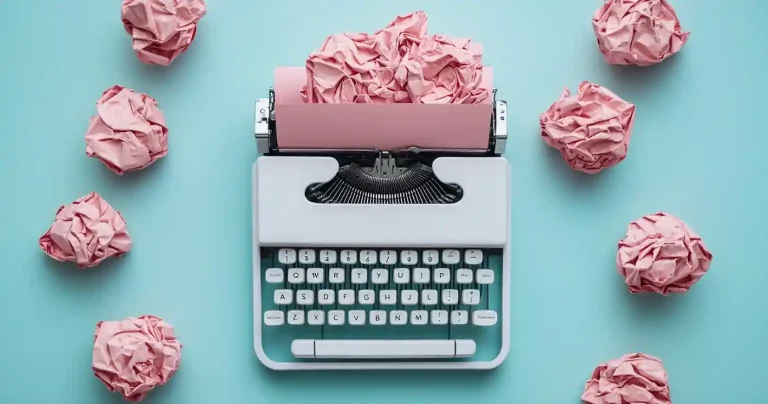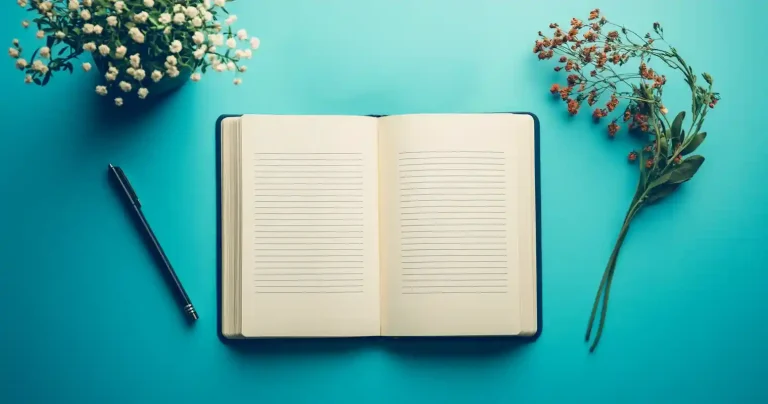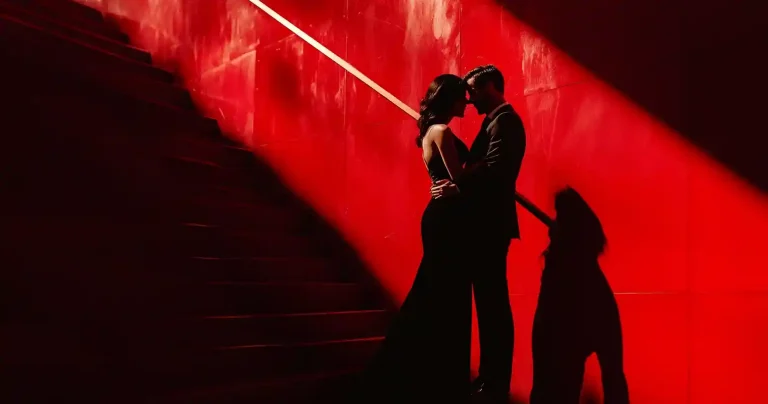At Authorversity, we’ve pulled insights straight from bestselling author Rachel Aaron—known for her compelling openings and tight plotting—and the hands-on workshops at The WriteTreat. Real feedback. Real writers. Real wisdom you can actually use in your opening chapter.
Starting a novel is like hosting a dinner party. You’ve got to impress from the get-go. If the appetizers (your opening pages) aren’t delicious, no one’s sticking around for dessert (the rest of your book).
But don’t panic! Writing the start of your novel doesn’t have to feel like solving a Rubik’s Cube blindfolded. With the right tips, you’ll hook readers faster than the latest Netflix hit.
Let’s dive into how to craft an opening that grabs attention and won’t let go.
Why Your First Pages Are Like a First Date
Imagine you’re on a first date. You’re dressed to the nines, your hair’s on point, and you’re ready to impress.
Then your date shows up and spends the first 20 minutes explaining their high school GPA. Yikes.
That’s what it feels like when a novel starts with endless backstory. Readers don’t want to know everything about your world or your protagonist right away. They just need a reason to care and a reason to stay.
The first few pages of your novel are your chance to make a killer first impression. Readers decide whether to keep going—or toss your book aside—faster than you can say “Chapter One.”
Think about it. When was the last time you read a book and thought, Wow, that six-page description of the weather really hooked me?
How to Write a First Line That Hooks Readers
Your first line is your opening act. It’s the mic drop moment that makes readers sit up and say, “Okay, I’m listening.”
Take this gem: “It was a bright cold day in April, and the clocks were striking thirteen.” (George Orwell, 1984). One sentence, and you’re already intrigued. What’s up with the clocks? Why are they striking thirteen?
Or how about this: “I write this sitting in the kitchen sink.” (Dodie Smith, I Capture the Castle). It’s weird. It’s vivid. You need to know more.
When figuring out how to start writing a novel, crafting a strong first line is one of the most powerful tools you have. The best first lines spark curiosity. They might introduce a mystery, a shocking moment, or a slice of your protagonist’s personality.
“I’m a huge believer in the first line being a doorway. It’s the line that says, ‘Come in, you’ll like it here.’ Whether it’s weird, punchy, or intriguing—it has to create an emotional reaction.” –Rachel Aaron, The WriteTreat Zoom sessions
Just remember: avoid clichés like “It was a dark and stormy night.” Unless you’re writing satire, your readers deserve better.
Meet Your Main Character (Without Making It Awkward)
Your protagonist is the heart of your story. But don’t dump their entire life story on us right away.
Introduce them like you would at a party: share just enough to pique interest. Show us a quirk, a struggle, or a goal that makes them relatable—or at least intriguing.
“You want to introduce your character doing the thing they’re built for—especially if it’s also the thing that’s about to get them into trouble. That’s the hook. That’s how you make readers instantly care.” –Rachel Aaron, The WriteTreat Zoom sessions
Take Elizabeth Bennet in Pride and Prejudice. Right off the bat, we know she’s sharp, a little skeptical, and has a wicked sense of humor. Jane Austen lets Lizzy’s personality shine through her actions and witty dialogue, instead of handing us a resume.
Focus on what makes your character compelling. The rest can come later, once readers are already hooked.
Setting the Scene Without Putting Readers to Sleep
Your setting is like the backdrop in a play. It adds depth and context, but it’s not the star of the show.
Readers don’t need an encyclopedia entry on your fictional world right away. Save the geography lesson and city council meeting minutes for later.
Instead, weave your setting into the action. Let your characters interact with it. If your story starts in a stormy forest, don’t just tell us it’s raining. Show us the snap of a branch underfoot, the icy sting of rain on their skin, and the way their breath clouds in the air as they run.
“World-building doesn’t belong in an encyclopedia—it belongs in a moment. If your character feels the cold cobblestones underfoot, that tells us something. Let the setting show through action, not info.” –Rachel Aaron, The WriteTreat Zoom sessions
Think about how J.K. Rowling introduces Diagon Alley in Harry Potter and the Sorcerer’s Stone. She doesn’t stop to explain every shop in painful detail. Instead, she lets Harry explore it, and we experience the magic through his eyes.
Pro tip: describe the world as your character experiences it. It keeps readers immersed without making them feel like they’re reading a textbook.
Why Conflict is the Secret Sauce of a Great Opening
Conflict is what makes stories exciting. Without it, your novel’s opening will feel like a lazy Sunday afternoon—nice, but not exactly memorable.
The good news? The conflict doesn’t have to be world-ending right away. Small stakes can hook readers too.
Maybe your protagonist is trying to catch a bus they cannot miss. Or maybe they’re late for a date with someone who might be their soulmate—or their murderer (romance, mystery, or both!).
Look at The Martian by Andy Weir. It starts with a bang: “I’m pretty much f***ed.” Right away, we know the stakes are high (and Mark Watney is stuck on Mars, no less).
The key is to make readers wonder, What’s going to happen next? Give them just enough to reel them in, and let the bigger conflicts unfold as the story progresses.
“The sooner something goes wrong, the better. Conflict is how you show your character in action. Even if the stakes are small, if it matters to your character, it’ll matter to your reader.” –Rachel Aaron, The WriteTreat Zoom sessions
Backstory: Sprinkle, Don’t Pour
Ah, backstory. The Achilles’ heel of so many novel openings.
It’s tempting to explain everything about your protagonist and their world right away. But trust me—don’t.
Readers don’t need to know that your main character’s great-grandfather invented peanut butter (unless, of course, it’s critical to the plot).
Instead, treat backstory like seasoning. Sprinkle it in where it’s needed, and only when it adds flavor.
Take The Great Gatsby, for example. F. Scott Fitzgerald doesn’t spend the first chapter telling us Nick Carraway’s entire life story. Instead, we get hints about his Midwest upbringing and his moral compass woven naturally into the narrative. We learn what’s important as it becomes relevant.
When in doubt, ask yourself: does this backstory help readers understand what’s happening right now? If not, save it for later.
“I’ve seen authors bury their openings in five pages of setup. Don’t. Just hint at what matters. Give readers a breadcrumb, not the whole bakery.” –Rachel Aaron, The WriteTreat Zoom sessions
Tone and Style: Set the Vibes
Your tone is like the soundtrack to your novel. It tells readers what kind of story they’re stepping into.
Are you writing a dark, brooding thriller? A lighthearted rom-com? A sweeping epic fantasy?
The tone should match your genre—and it should start on page one. If you’re writing a horror novel, don’t open with a joke about cats (unless it’s a scary cat). If it’s a comedy, let your humor shine through right away.
For example, Douglas Adams starts The Hitchhiker’s Guide to the Galaxy with pure absurdity: the Earth is about to be demolished to make way for a galactic freeway. You know immediately what kind of wild ride you’re in for.
Think of your opening as a promise to the reader. Set the tone early, and make sure the rest of the book delivers on it.
Editing Your Opening Like a Pro
Let’s be real: your first draft is just the warm-up. The first chapter you write might not even survive to see the final version of your book—and that’s okay.
The editing phase is where the magic happens. It’s like the makeover scene in a rom-com. Your rough opening? That’s the frumpy, unpolished version. By the time you’re done revising, it’s strutting down the hallway to a killer soundtrack.
Step 1: Get Feedback (and Prepare to Hear the Hard Stuff)
Your opening chapter might feel like your baby, but to grow, you’ve got to let other people read it. Enter: beta readers.
Beta readers are your honest, book-loving friends (or strangers, if your friends are too nice) who’ll tell you if your opening works. Did they keep reading? Were they confused? Did they laugh when they weren’t supposed to?
Take notes. If everyone gets stuck on the same paragraph, it’s a clue that something needs tweaking. Don’t defend your work—listen. Even if the feedback stings a little.
“Don’t treat feedback like a verdict—it’s a flashlight. If three people trip over the same sentence, that’s not personal. It’s a signpost telling you where to fix the flow.” –Rachel Aaron, The WriteTreat Zoom sessions
Think of it as a reality check, like when your GPS says, “Rerouting.” It’s not an attack on your driving; it’s just getting you back on track.
Step 2: Cut the Fluff
Your opening pages should be lean and mean. Every sentence should earn its place.
Do you really need that two-paragraph description of your protagonist’s hair? Probably not. Unless it’s made of snakes or literally catches fire, cut it.
Readers want to be intrigued, not bogged down by unnecessary details. Keep it snappy, and save the deep dives for later chapters.
When in doubt, ask yourself: does this move the story forward? If the answer is no, out it goes. Marie Kondo that fluff.
Step 3: Polish the Prose
Your first chapter is your book’s handshake. It’s got to be firm, confident, and a little memorable.
Look for clunky sentences or words you’ve repeated too much (seriously, how many times can one character “shrug”?). Switch out weak verbs for stronger ones. Instead of “she walked slowly,” try “she crept” or “she trudged.”
And read it out loud. Yes, out loud. You’d be amazed how many awkward phrases you catch when you hear them spoken. It’s like spotting spinach in your teeth when you smile in the mirror.
Step 4: Match Your Opening to Your Book’s Mood
Revisit your tone. Does it match the vibe of the rest of your story? If your novel is a gritty thriller, your opening shouldn’t feel like a cheerful coffee shop meetup. Unless, of course, the coffee shop is about to explode.
Consistency is key. You’re setting expectations for the reader. If the opening feels wildly different from the rest of the book, it’s like starting Breaking Bad with a laugh track.
Opening Chapter Lessons From the Greats
Want inspiration? Look to the pros. Successful authors know how to start a book with a bang—and keep the energy going.
For example, in Rebecca by Daphne du Maurier, the haunting opening line—“Last night I dreamt I went to Manderley again”—immediately sets a mysterious, melancholic tone.
Or take The Road by Cormac McCarthy. The bleak, pared-down prose in the opening perfectly mirrors the post-apocalyptic world he’s built. Every word feels deliberate.
The takeaway? Study the openings of books you love. What made them unforgettable? Steal their techniques (ethically, of course).
Practice Makes Perfect
Writing a great opening takes time. Don’t expect to nail it on the first try—or even the tenth.
The key is persistence. Keep drafting, revising, and seeking feedback until your first chapter shines brighter than a freshly polished car in a showroom.
And remember: no opening is perfect for everyone. Some readers will love it, and some won’t. That’s okay. Your job is to hook the ones who will.
Happily Ever After Starts Here
Congratulations! You’ve made it through the wild, wonderful ride of starting your novel.
Your opening chapter is your book’s handshake, its elevator pitch, its first impression at a party. It doesn’t have to be perfect (because no first draft ever is), but it should give readers a reason to keep turning the pages.
Start with a killer first line. Introduce your protagonist in a way that makes us care about their journey. Show us a little of the world, drop a pinch of conflict, and leave just enough mystery to make us curious.
And don’t forget: editing is your best friend. Writing a novel is a marathon, not a sprint. You’ve got time to revise, tweak, and polish your opening until it gleams like the top of the Chrysler Building.
Remember, even the greatest books started as messy drafts. What matters is that you start—and keep going.
So grab your coffee (or tea, or wine—we don’t judge), fire up your laptop, and get those words on the page.
Your future readers are waiting. Go make them fall in love.
The end. Or, really, the beginning.








